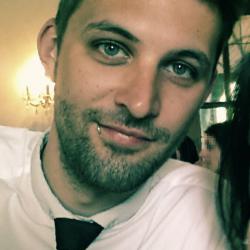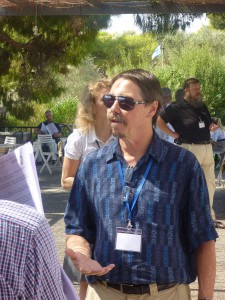In the last twelve hours, a series of major earthquakes struck the Santa Cruz Islands. Beginning with the activation of a thrust fault with a M8.0 (M7.9) earthquake, almost fifty aftershocks hit the region. A regional tsunami warning was released short six minutes after the first quake at 1:12 UTC and has now been cancelled.
-
Small tsunami hits Solomon coast – M8 earthquake and fifty aftershocks
2013-02-06 | in Earthquake | one response -
The Wednesday Centerfault (9) – Altyn Tagh Fault
2012-10-31 | in CenterfaultQuite near my personal working area or, in other words, some hundreds of kilometers away (which I didn’t experience as much of a distance in a huge country like China), the terrific and over 1500 km long Altyn Tagh Fault separates the northern Tibetan Plateau from the Tarim Basin and the Alashan and Alxa blocks. more
-
Earthquake series in southern China
2012-09-10 | in EarthquakeThis Friday a series of four major earthquakes happened in the border region of Sichuan, Guizhou and Yunnan provinces, S China. At least 80 fatalities and almost 800 injured were recorded, the China Earthquake Administration states. International journals confirm these news. Associated landslides were reported. more
-
Wanderlust (1) – Magaro Peak
2012-01-24 | in UncategorizedSitting in an office after sunset and browsing any kind of Earth Explorer makes a lot of people think about lovely places far away. We geoscientists are in a quite comfortable stuation with field trips and meetings all over the world. But maybe sometimes there are thoughts about places you haven’t been to. I would like to introduce this section as a suggestion for your next holiday or even field trip with bits and pieces of culture, scenery and geology. more
-
Open research positions at Lisbon University
2011-12-05 | in Teaching, UncategorizedA new job announcement was posted some couple of days ago: the University of Lisbon offers two post-doctoral research positions for up to 5 years. Application submission opens this Wednesday, 7 December and closes on 13 January 2012.
-
Corinth 2011 workshop has started!
2011-09-19 | in Corinth 2011 After the arrival (thanks to Christoph for the shuttle!) and a very nice opening dinner yesterday the first key note lectures have been held this morning.
After the arrival (thanks to Christoph for the shuttle!) and a very nice opening dinner yesterday the first key note lectures have been held this morning.Dimitrios Papanikolaou introduced the Hellenic Arc system and talked about plate scale-geometries and active movements.
Jim McCalpin held a very interesting talk about using Lidar in dense forests in Alaska to detect neotectonic movements which surely would be a great method for Europe, too!
Eldon Gath presented a study dealing with three-dimensional fault rupture interpretation.
Right now it’s time for the first poster session. We’re directly at the beach, it’s almost 30°C, sunny and a smooth breeze chills our science-filled minds.
-
Young Geologists – New Insights (1)
2011-06-21 | in TeachingIn April 2011 we started on a field trip to investigate the Padul-Nigüelas Fault Zone in Spain (+/- 37°N, 3°36°W, see map here). Like the Wednesday Centerfault (5), the PNFZ is in the Granada Basin but some 40 km ENE. Delimiting Tortonian to Quaternary basin fillings to the Sierra Nevada, the PNFZ forms hardrock scarps. more


